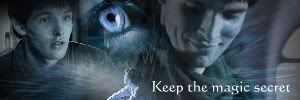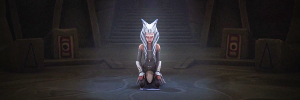I'm somewhat surprised that despite Lewis's frequent use of mythological characters and stories within the Chronicles of Narnia, there hasn't been much discussion on this topic in the new forum. This is a huge subject area that could have so many possibilities. Have you noticed any similarities between the Narnia books and ancient myths or classic literature? Do you have any interesting facts about mythological creatures or characters that you'd like to share? Do you have any questions about mythology that you are hoping other NarniaWebbers can answer for you? This is the place to discuss the topic of mythology, something that Lewis admired and brought to us through the world of Narnia.
I’ll get the ball rolling with a few questions:
Was C. S. Lewis the first person to treat the Minotaur as a race rather than a single person?
Does anyone know of any books that discuss the creatures of Narnia in detail?
What do you think of the specific mythological characters (Father Christmas, Bacchus, Father Time, etc.) mentioned in the Chronicles? Why are they there and what do they bring to the story that no other character could?
Movie Aristotle, AKA Risto
I like that he uses many characters from mythology, and I don't mind that it is a hodgepodge.  One of the nice things about it is that it connects different cultures. i.e. not all of the mythological creatures are Greek /Roman.
One of the nice things about it is that it connects different cultures. i.e. not all of the mythological creatures are Greek /Roman.
I think Father Christmas is there as a hint for who Aslan is and it also is a convenient way for the children to get the tools they will need later. I think the "never Christmas" part of the winter would show children just how depressing the Witch's winter is. It also shows the weakening of her magic. I really am not sure exactly what the point of Bacchus is. I read somewhere that Lewis believed that all myths pointed to the one true myth and this was a way he showed it. Or something like that. If Aslan can be in both worlds, I don't see why some other figures can't be. I've kind of imagined Father Christmas going around to different worlds to deliver presents. With the time difference Christmas wouldn't have to be on the same day everywhere. 
There is a book that has some of the creatures of Narnia and uses illustrations from the book. There is also a book about the creatures in the movie. The former was okay but not as much help as I would have liked. Right around when LWW came out I was doing research on the different characters in the White Witch's army and I could find hardly any info at all. I also wanted to find pictures and had trouble with that. (It was about this time that I discovered NarniaWeb - specifically its image gallery.) I would love to know more about exactly what those creatures are. I could find info on some of them but not others. I know what Giants, werewolves, Ogres, Hags, Incubuses, Wraiths (as long as they are similar to what they are in LotR) and Minotaurs are. I'm pretty sure Ghouls and Spectres are similar to ghosts. But I'm not sure about Cruels, Horrors, Sprites, Orkinies, Wooses, Efreets, and people of the Toadstools. I think Ettins might be two-headed giants but I'm not sure. (of course some of those characters might not be appropriate to talk about on this forum)
I've read / studied some mythology but I'm interested in learning more, specifically about the ones mentioned in Narnia of course  .
.

NW sister to Movie Aristotle & daughter of the King
Interesting questions!
Was C. S. Lewis the first person to treat the Minotaur as a race rather than a single person?
Does he treat them as a race rather than a single person? The only time I can remember Minotaurs even being mentioned there's only one. The movies show them as a race, but I don't think the books do. I could be wrong.
What do you think of the specific mythological characters (Father Christmas, Bacchus, Father Time, etc.) mentioned in the Chronicles? Why are they there and what do they bring to the story that no other character could?
It always seemed natural to me.
I think the "never Christmas" part of the winter would show children just how depressing the Witch's winter is. It also shows the weakening of her magic.
I think so to. Since the the spell is "always winter, never Christmas" Father Christmas coming signals the beginning of the end of the spell. Again, it always seemed natural to me.
Bacchus is a little harder, but I never questioned it until I actually started studying mythology. Bacchus isn't nice in mythology, but he serves Aslan in Narnia, so he's nice there. Although Lucy says she'd be scared meeting him if Aslan wasn't there. Tumnus talks about the summers when Bacchus would come, and so it makes sense that Bacchus comes in PC because Aslan is restoring the old Narnia. I missed that in the movie.
Father Time just helped tie everything together I think. The bit with him in SC could easily be missed, but then in LB he has a large part in Narnia's end, which I thought was cool.
A ghoul is like a cross between a zombie and vampire, and it comes from Middle-Eastern folklore. Ghouls are associated with graveyards and tombs.
A sprite could be a ghost (the word comes from "spirit,") but it is most likely a fairy, or "spriggan" as in Celtic mythology.
An Orkny is most likely a brownie, a mischievous house-goblin or hobgoblin from Scottish folklore. I only guess this because the Orkney islands are Scottish, and C.S. Lewis might have drawn a clever connection between this name and the creature from legend.
Wooses likely come from wood-woses, hairy wild-men of medieval legend who lived in forests and wilderness, and who represent the opposite of civilized man.
An efreet or ifrit is like an evil genie. They come from Arabic and Islamic legend.
People of the Toadstool are just fairies again, or nymphs, so named because a "fairy circle" is a ring made out of mushrooms that sometimes appear in grassy or wooded areas. In folklore the appearance of these rings was thought to signify a gathering place for fairies.
An Orkny is most likely a brownie, a mischievous house-goblin or hobgoblin from Scottish folklore. I only guess this because the Orkney islands are Scottish, and C.S. Lewis might have drawn a clever connection between this name and the creature from legend.
Yeah, the Orknies have most people stumped. But notice the similarity between Orkney and Orc. Whatever kind of creature it is, it isn't nice.
An efreet or ifrit is like an evil genie. They come from Arabic and Islamic legend.
Not just any kind of genie: A Fire Jinn.
People of the Toadstool are just fairies again, or nymphs, so named because a "fairy circle" is a ring made out of mushrooms that sometimes appear in grassy or wooded areas. In folklore the appearance of these rings was thought to signify a gathering place for fairies.
Just to clarify, we usually think of fairies as nice creatures, but before Peter Pan fairies were usually portrayed as mischeivous at best, downright evil at worst.
Good work Berserker! 
I noticed something interesting yesterday in the glossary of a collection of Aesop's Fables edited by D. L. Ashliman:
Satyr: A creature in Greek mythology, a satyr is usually depicted as half man and half horse (or goat). Associated with Dionysus, god of wine and revelry...The Roman counterparts of satyrs were the fauns.
I've never heard of a satyr possibly being part horse, and I never realised that the words "satyr" and "faun" might be describing the same thing in two different languages. Since C. S. Lewis mentions both in the Chronicles, do you think he meant them to be two different species?
*Edit
Does he treat them as a race rather than a single person? The only time I can remember Minotaurs even being mentioned there's only one. The movies show them as a race, but I don't think the books do. I could be wrong.
I looked it up to make sure and yes, in LWW Lewis refers to Minotaurs.
Movie Aristotle, AKA Risto
Thanks Berserker and Movie Aristotle for the information on the bad guys.
Just to clarify, we usually think of fairies as nice creatures, but before Peter Pan fairies were usually portrayed as mischeivous at best, downright evil at worst.
Tinkerbell isn't all that nice.  I don't really see what the fascination is with her anyway. (oops off subject
I don't really see what the fascination is with her anyway. (oops off subject  ) But we do tend to think of fairies as nice.
) But we do tend to think of fairies as nice.
I noticed something interesting yesterday in the glossary of a collection of Aesop's Fables edited by D. L. Ashliman:
Satyr: A creature in Greek mythology, a satyr is usually depicted as half man and half horse (or goat). Associated with Dionysus, god of wine and revelry...The Roman counterparts of satyrs were the fauns.
I've never heard of a satyr possibly being part horse, and I never realised that the words "satyr" and "faun" might be describing the same thing in two different languages. Since C. S. Lewis mentions both in the Chronicles, do you think he meant them to be two different species?
I've wondered about this, since I thought they were pretty much the same thing. I think he did mean them to be different otherwise he wouldn't have included them in the same list unless it was something like "Fauns or Satyr" In MN, he clearly wrote "Out of the trees wild people stepped forth, gods and goddesses of the woods: with them came Fauns and Satyrs." I don't see the point in his mentioning them both like that unless he considered them to be different. I don't see him as one to use unnecessarily words. I don't remember hearing the part about about satyrs being part horse. I've just checked out Mythology: Timeless Tales of Gods and Heroes by Edith Hamilton. I quick glance at the index indicates that "Fauns" and "Satyrs" are mentioned. If I find anything of interest I'll post it here. The movies considered them different races and made the Satyrs more wild than fauns and more goat-like but I that really doesn't mean much in regard to what Lewis meant.  They also made the Minotaurs different that the classic picture of them.
They also made the Minotaurs different that the classic picture of them.

NW sister to Movie Aristotle & daughter of the King
I gotta say, I was so interested in myths when I learned Narnia had some of it. Like the centaurs, minotaurs, and those dryads and naiads. I became active in mythologies especially Greek, since I read that there were dryads and naiads plus minotaurs there.

"Two sides of the same coin"
I'm back. 
According to the book I mentioned in my last post,
The Satyrs, like Pan, were goat-men, and like him they had their home in the wild places of the earth.
The fauns were Roman satyrs.
They seem then to be the same thing. However:
Faunus was Saturn's grandson. He was a sort of Roman Pan, a rustic god. He was a prophet too, and spoke to men in their dreams.
Pan ... was Hermes' son; a noisy, merry god, ... but he was part animal too, with a goat's horns, and goat's hoofs instead of feet. He was the goatherds' god, and the shepherds' god, and also the ... companion of the woodland nymphs when they danced. All wild places were his home, thickets, and forests and mountains, but best of all he loved Acrady, where he was born. He was a wonderful musician. ... He was always in love with one nymph or another, but always rejected because of his ugliness. Sounds heard in the wilderness at night by trembling travelers were supposed to be made by him, so that it is easy to see how the expression "panic" fear arose.
It looks like Fauns and Satyrs are pretty much the same but there might be a differences between Faunus and Pan. I'm not sure if the sentence about Faunus being a prophet too, means he was a prophet like Pan or just that he was a prophet. In the book, there wasn't any mention of Pan being a prophet. The book doesn't say who Faunus's father was but if he were the son of Mercury (Hermes's Roman counterpart) would be the great grandson of Saturn. I suppose "grandson" could be used as a general term for any type of grandson. I suppose Satyrs could be seen as goat-men who follow or are related to Pan and Fauns could be seen as goat-men related to Faunus and then be different lines.
On minotaurs, I found this on Wikipedia
Minotaur was originally a proper noun in reference to this mythical figure. The use of minotaur as a common noun to refer to members of a generic race of bull-headed creatures developed much later, in 20th-century fantasy genre fiction.

NW sister to Movie Aristotle & daughter of the King
On Wikipedia I found this quote:
Fauns and satyrs were originally quite different creatures: whereas fauns are half-man and half-goat, satyrs originally were depicted as stocky, hairy, ugly dwarfs or wood woses with the ears and tails of horses or asses.
http://en.wikipedia.org/wiki/Faun
I'm not sure if it true though.
The Satyr article on Wikipedia says that:
Attic painted vases depict mature satyrs as being strongly built with flat noses, large pointed ears, long curly hair, and full beards, with wreaths of vine or ivy circling their balding heads. Satyrs often carry the thyrsus: the rod of Dionysus tipped with a pine cone.
Satyrs acquired their goat-like aspect through later Roman, conflation with Faunus, a carefree Italic nature spirit of similar characteristics and identified with the Greek god Pan.
http://en.wikipedia.org/wiki/Satyr

Signature by daughter of the King; Avatar by Adeona
-Thanks :]
Keeper of the Secret Magic
I was always intrigued by the bull with a man's head in LWW. It stood out, since I don't think I've ever heard of a mythological creature like that (and I was a classics major in undergrad). I think I sorta figured it was an opposite of a minotaur, thus it was 'good'. But it still always confused me.

With God as my leader and my sword as my companion
avatar and sig by me
My overview of VODT: http://lady-lirenel.livejournal.com/151965.html
I was always intrigued by the bull with a man's head in LWW. It stood out, since I don't think I've ever heard of a mythological creature like that (and I was a classics major in undergrad). I think I sorta figured it was an opposite of a minotaur, thus it was 'good'. But it still always confused me.
You probably didn't hear of it because it's not from classical mythology, but from Sumerian and Babylonian myth. The creature is called a lamassu, and it was a protector of gateways and dwellings. It can be found very frequently in the architecture and sculpture of ancient Babylon.
One doesn't usually think of a bizarre monster from Babylon as being "good," but nevertheless, it is true. 
You probably didn't hear of it because it's not from classical mythology, but from Sumerian and Babylonian myth. The creature is called a lamassu, and it was a protector of gateways and dwellings. It can be found very frequently in the architecture and sculpture of ancient Babylon.
One doesn't usually think of a bizarre monster from Babylon as being "good," but nevertheless, it is true.
Yup, that would be why I didn't know it! I never did study Babylonian mythology much. Thanks for the information, that's really interesting!

With God as my leader and my sword as my companion
avatar and sig by me
My overview of VODT: http://lady-lirenel.livejournal.com/151965.html
I was looking up Nymphs in an online encyclopedia and found that there were a group of star nymphs called Asteriae. Do you think that Liliandil is meant to represent a star nymph in the movie? What about in the book? When Lewis wrote about stars in Narnia, do you think he drew a distinction between stars and asteriae? Are they pretty much the same thing, or are Narnian stars something new?
Movie Aristotle, AKA Risto
@ Movie Aristotle - That's interesting. Until I read your post, I was not aware that there were star nymphs. I researched a little. I think the stars were the Narnian version of star nymphs. Ramandu's daughter married Caspian which is similar to the star nymph Merope who married a king as well. Although the other two stars we meet are scholarly old men. I couldn't find any examples of that in mythology.
Excellent topic idea btw.
"Reason is the natural order of truth; but imagination is the organ of meaning." -C.S. Lewis
Berserker, that's for that information. I didn't know that. Personally, I thought a bull with man's head would be far more disturbing than a minotaur, but maybe that's just me. 
Currently watching:
Doctor Who - Season 11


